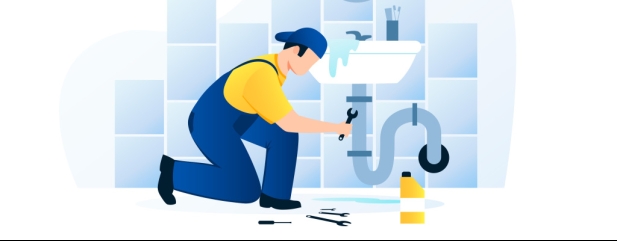Archived article
Please note that tax, investment, pension and ISA rules can change and the information and any views contained in this article may now be inaccurate.
How the changes to national insurance will affect you

The changes announced by Jeremy Hunt to national insurance at the Autumn Statement, mean millions of workers will see their pay packets get a little boost next year. But what were the changes, what do they mean for self-employed people as well as employed, and how do your credits for the state pension work now?
WHAT WERE THE CHANGES ANNOUNCED FOR EMPLOYED PEOPLE?
Hunt said he would cut the main rate of national insurance from 12% down to 10%. This rate for ‘class 1’ national insurance applies to earnings between £12,570 and £50,270. It means that anyone with earnings of more than £12,570 will see a cut to their national insurance bill, which will boost their take-home pay.
The move will save an employed working couple up to £1,500 a year and will save someone on a £30,000 salary around £350 a year, while anyone earning more than the £50,270 threshold will save the maximum of £754 a year.
The chancellor has also fast-tracked the move, meaning that it will come in from 6th January next year, rather than the new tax year in April. Employees don’t need to do anything to apply for the cut, their payroll department will handle the change and they will see the impact directly in their pay packet.
WHAT ABOUT THE CHANGES FOR SELF-EMPLOYED PEOPLE?
The chancellor made two changes that impact self-employed people: he cut the rate of national insurance on ‘class 4’ contributions, and he abolished ‘class 2’ contributions.
Let’s take the ‘class 2’ contributions first. These are a flat rate payment that self employed people make, based on a weekly amount. It’s currently £3.45 a week but would have risen to £3.70 from April next year. These payments are made by anyone with profits above £12,570 a year (although it’s actually based on weekly earnings) and are used to count towards people’s national insurance record for state pension and other benefit purposes. Self-employed people will no longer have to pay them, but they will still receive that credit towards their national insurance record.
Previously someone who have profits between £6,725 and £12,570 received a national insurance credit but didn’t have to pay the class 2 contribution. These people will still receive the credit and still won’t have to pay the class 2 rate (because it will no longer exist).
Next up class 4 contributions: these are paid by self employed people on their profits, in a similar way to Class 1 contributions made by employed people. Currently you pay 9% of your earnings between £12,570 and £50,270 and then 2% above that (you pay no National insurance on the first £12,570 of your self-employed profits). The chancellor has cut the main rate from 9% down to 8%.
Both the class 2 and class 4 changes will come in from April next year.
HOW MUCH DOES THIS SAVE SELF EMPLOYED PEOPLE?
Currently someone with profits over the £12,570 annual threshold will be paying £179.40 a year in class 2 contributions, but this would have increased to £192.40 from next April. This means they will save this sum from April next year.
On top of that the changes to the class 4 rate will mean someone with profits of £30,000 will save £353,70 while someone earning more than £50,270 will save the maximum of £556.40 a year.
WHAT ABOUT IF I MAKE VOLUNTARY NATIONAL INSURANCE CONTRIBUTIONS?
Some people pay class 2 national insurance contributions even if their earnings aren’t high enough to require them to do so. That’s because they want to get a credit towards their state pension record or to be eligible for certain other state benefits, such as maternity allowance and contribution-based employment and support allowance.
The Government says that people will still be able to pay the voluntary class 2 contributions and that it will freeze the rate at its current level – which is £3.45 a week. It will lay out the full detail of the reform to national insurance next year, before the changes come into force in April.
IS THIS A BIG TAX SAVING?
On paper this looks like a decent tax cut and a way to boost people’s take-home pay. However, it has to be set in the context of a Government who has frozen tax bands at a time of high inflation, meaning that people are being pushed into the next tax bracket and paying more tax.
While the Government has made these changes to the national insurance rates it has still frozen the threshold at which you start paying national insurance, rather than raising it in line with inflation. It means that people will start to pay national insurance once their earnings or profits reach £12,570 – when usually this would rise by a bit each year to account for rising wages.
You only have to look at the Government’s figures on how much this move costs versus how much they are making from frozen tax bands. The Government says that the changes to national insurance, for both employed and self-employed, will cost it £9.44 billion a year. Meanwhile, the Institute for Fiscal Studies estimates that frozen tax bands will make the Government £50 billion a year – so significantly more.
Important information:
These articles are provided by Shares magazine which is published by AJ Bell Media, a part of AJ Bell. Shares is not written by AJ Bell.
Shares is provided for your general information and use and is not a personal recommendation to invest. It is not intended to be relied upon by you in making or not making any investment decisions. The investments referred to in these articles will not be suitable for all investors. If in doubt please seek appropriate independent financial advice.
Investors acting on the information in these articles do so at their own risk and AJ Bell Media and its staff do not accept liability for losses suffered by investors as a result of their investment decisions.
Issue contents
Editor's View
Feature
Great Ideas
News
- The S&P 500 set to notch-up the biggest monthly gain of the year
- Frontier Development shares hit a nine-year low on sales disappointment
- Rightmove shows resilience in latest trading update despite housing market uncertainty
- Strong growth and a new head of operations drive rerating at Trustpilot
- Will the latest global climate conference result in meaningful progress?

 magazine
magazine








